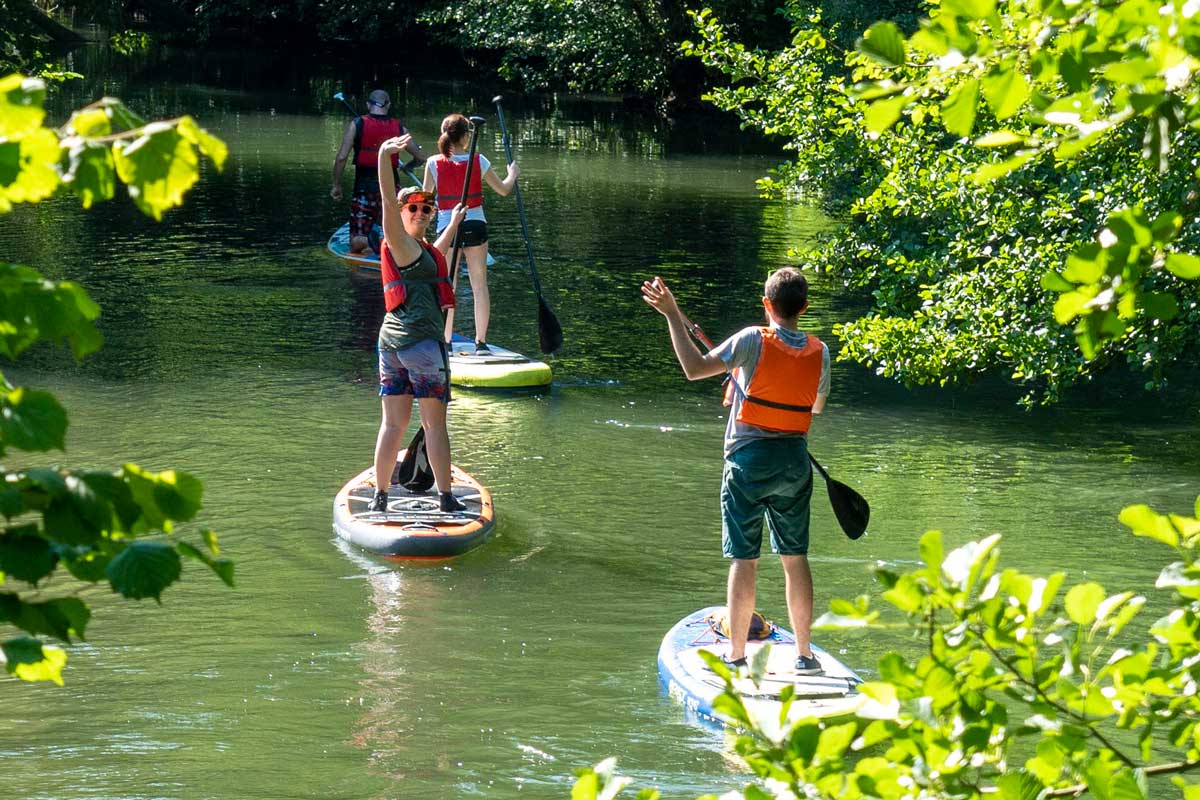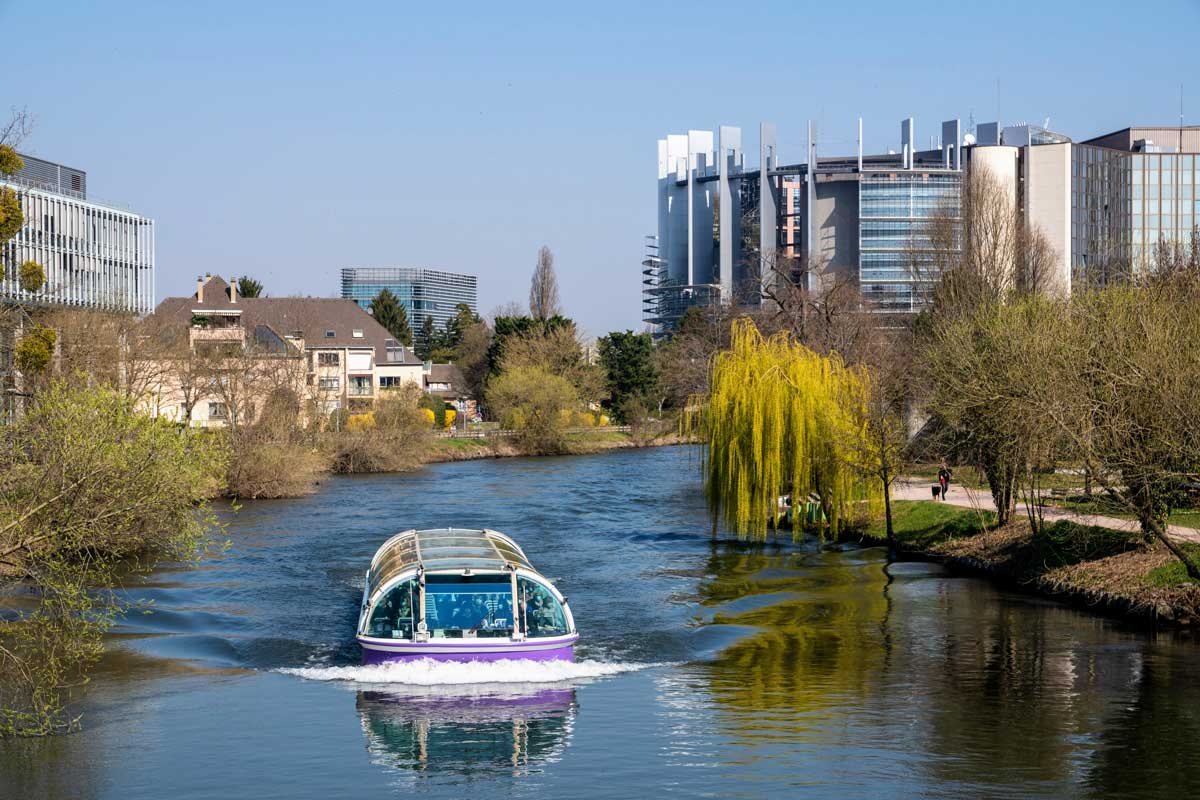Ever wondered which river crosses Strasbourg? It's not just one, but several! The Ill river crosses the city and in particular the picturesque district of Petite France. But the Rhine is also present and marks the city's border with Germany to the east. Add to this the different canals that crisscross the city and which sometimes give it the air of a little Venice. Curious to know more? Let's dive in.
River Ill: The Heart of Strasbourg
As one of the main tributaries to the mighty Rhine, the river Ill holds an essential spot in defining Strasbourg's geography and daily life. Serving as the backbone of the historical city center, the Ill divides into several branches, forming what is known as "Grande Île," which has been recognized as a UNESCO World Heritage Site since 1988.
Along the banks of the river Ill, you will find some of the city's most iconic landmarks, such as Strasbourg Cathedral and the picturesque district Petite France with its half-timbered houses and its charming cobbled streets. Moreover, canals branching off from the main river course create additional scenic walkways and bridges, adding to the allure of the ancient cityscape even more.
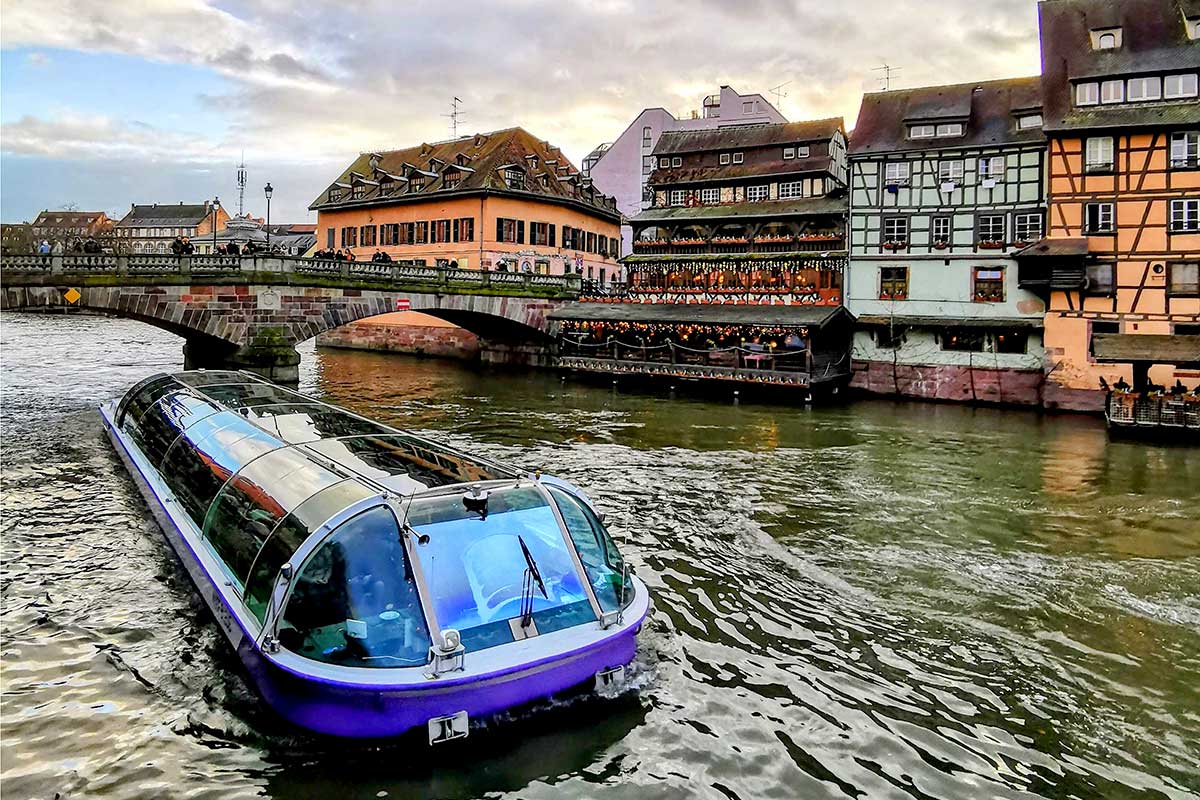
The Significance of the River Ill in History and Trade
Historically, the river Ill played a vital role in trade and commerce for Strasbourg, especially during periods when the city was part of the Holy Roman Empire as it enabled easy navigation to the Rhine. Today, although the structures along its shores have been mostly restored and preserved for tourism, the river is still an essential part of Strasbourg's economy.
Yearly flooding is a common occurrence during the winter months. However, through centuries of adaptation, we are well-prepared and consider these periods as vital to the maintenance of the biodiversity within the local ecosystems.
Batorama: A Tour Through Strasbourg's Waterways
If you're looking to experience Strasbourg from a unique vantage point, look no further than Batorama. This boat tour offers a journey around the Grande Île and even extends to the European district. Utilising the River Ill as its primary route, Batorama provides an unparalleled view of Strasbourg's historical and modern landmarks.
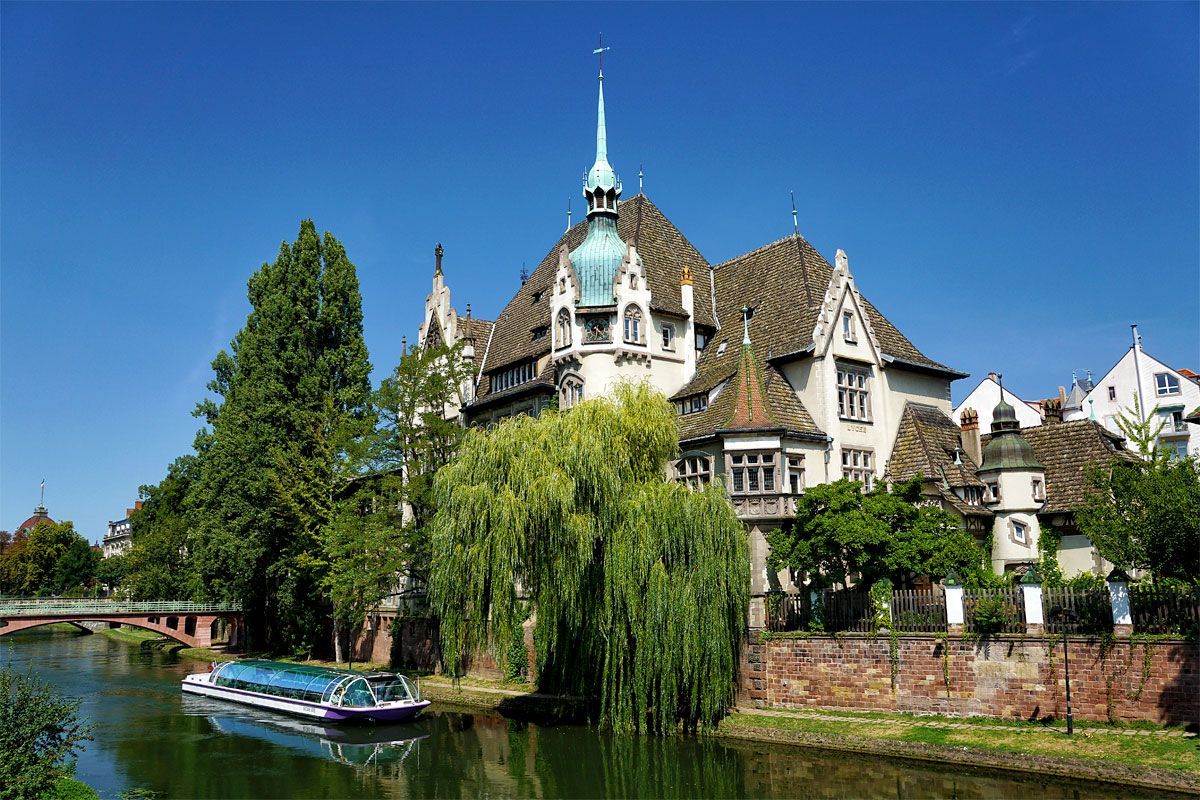
From the UNESCO-listed architecture of the Grande Île to the cutting-edge buildings in the European Quarter, this tour encapsulates the essence of Strasbourg in just over an hour. As the tour promises, "in Strasbourg, the eye is never bored!"
The Rhine: Strasbourg's Eastern Frontier
The Rhine is more than just a river; it's a symbol of the natural and political landscape that shapes Strasbourg. Serving as the eastern boundary of the city, the Rhine also marks the border between France and Germany. This geographical feature has had a profound impact on Strasbourg's history, culture, and economy.
The Rhine as a Natural Border
The Rhine's role as a natural border has been significant throughout history. During times of conflict and peace alike, the river has served as a demarcation line, separating two nations but also connecting them through trade and cultural exchange. The Rhine is not just a river; it's a living testament to the complex relationship between France and Germany.
The Rhine has been a crucial artery for trade and transportation for centuries. Its navigable waters have facilitated the movement of goods, people, and ideas, making Strasbourg a hub of activity. Today, the river continues to be a vital part of the city's economy, with ports that handle a wide range of commodities, from agricultural products to industrial goods.
Strasbourg's bridges on the Rhine: A Tale of Unity and Division
The bridges over the Rhine in Strasbourg are not just mere structures; they are historical landmarks that have seen the ebb and flow of time, politics, and human endeavour. The first permanent known bridge, Lange Brücke, was built in 1388 and served until 1797. It was a wooden structure that spanned an impressive 1,400 meters and included fortified outposts for toll collection and defence.
In the modern era, the Pont de l'Europe stands as a symbol of Franco-German reconciliation. Inaugurated in 1960, it is the most frequented border crossing between France and Germany, with approximately 130,000 vehicles transiting daily.
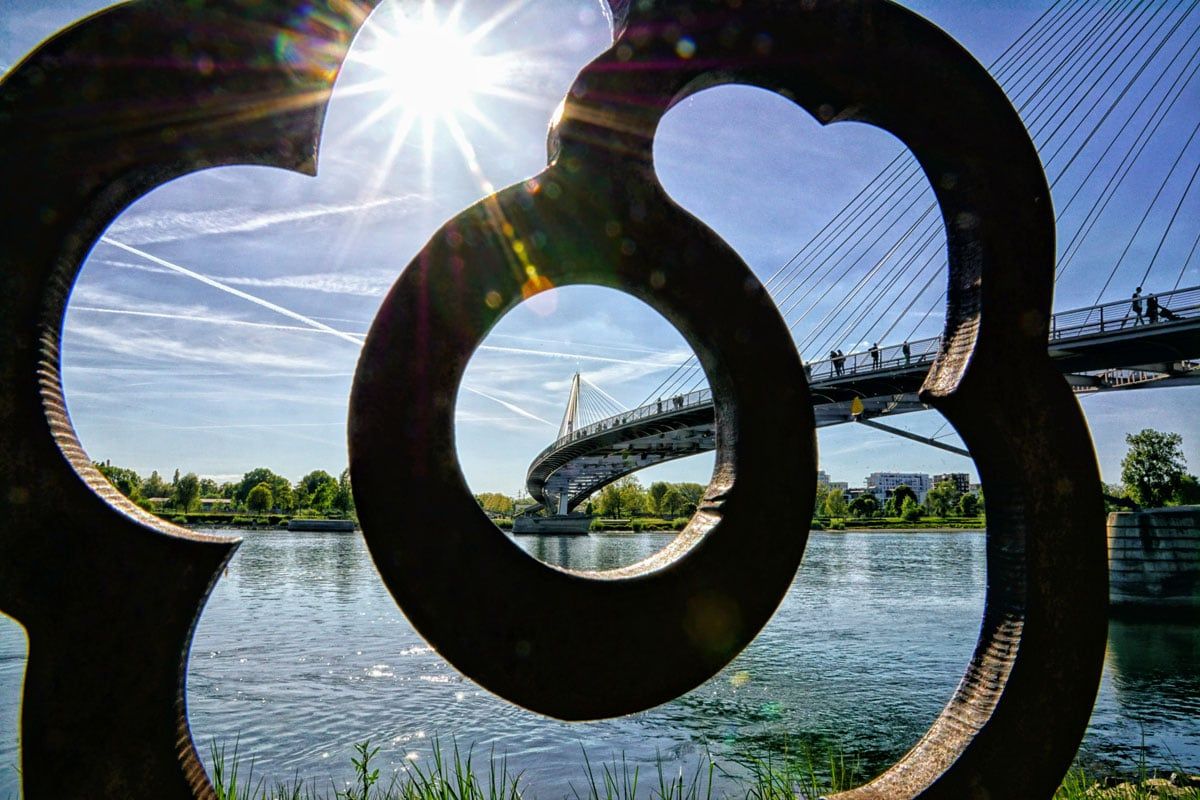
But the bridges are not just about cars and commerce; they are also about people. Inaugurated in 2004, the Passerelle des Deux Rives, for instance, is a pedestrian and cyclist bridge designed by architect Marc Mimram that connects the French and German sides of the Rhine. The bridge even hosted Barack Obama, Nicolas Sarkozy and Angela Mergel in 2009 during a NATO summit.
Strasbourg's Manmade Canals: Connecting Cities and Cultures
In addition to its natural river systems, Strasbourg boasts an extensive network of canals that crisscross the city, providing additional scenic beauty and utility. Of all the channels weaving throughout its urban fabric, two stand out for their importance and history: the Rhone-Rhine Canal and the Marne-Rhine Canal.
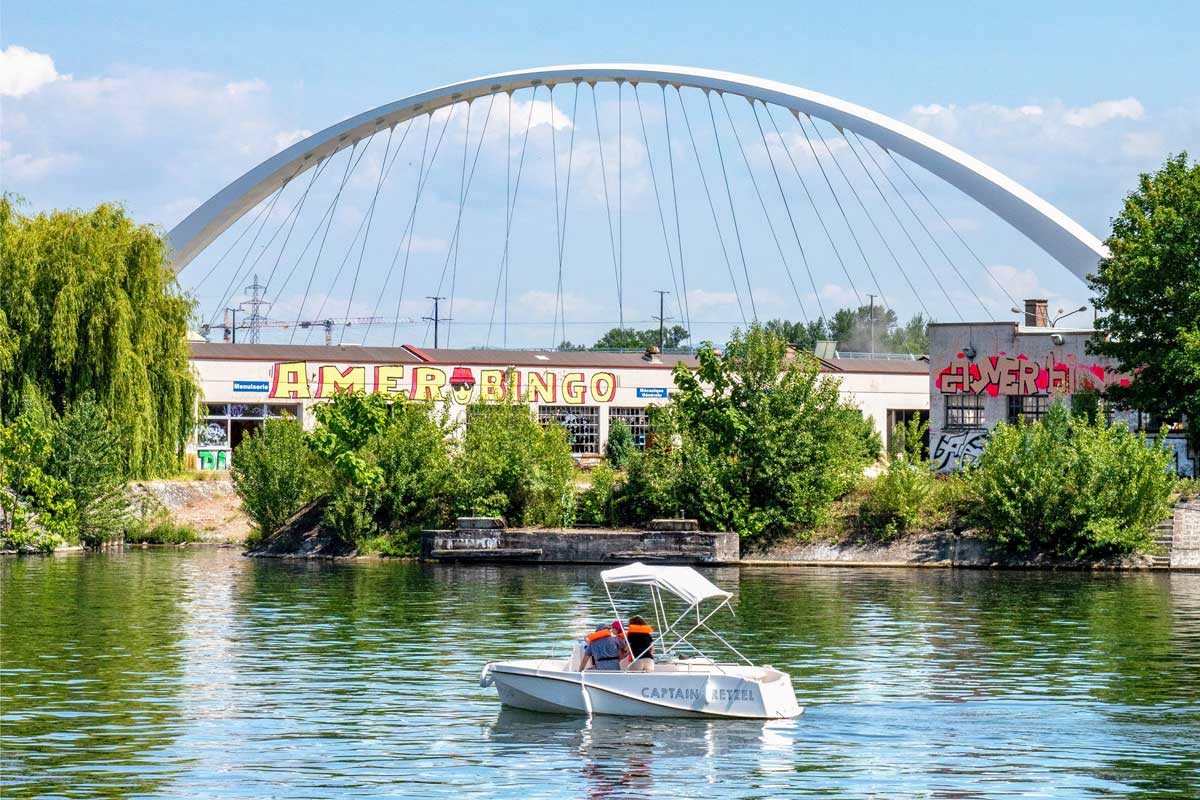
The Rhone-Rhine Canal: Linking France's East to West
Constructed at different points during the 19th and 20th centuries, the Rhone-Rhine Canal connects the Mediterranean with the North Sea via Strasbourg. Passing particularly through the city's eastern districts, this vital waterway helped develop new urban areas of the city while enhancing its commercial prospects even further. Today, the picturesque canal can be enjoyed for leisure pursuits such as walking, cycling, or taking boat tours to explore the sights it has to offer.
Marne-Rhine Canal: A Pathway to the French Heartland
Another significant channel that cuts across Strasbourg is the Marne-Rhine Canal. Established in 1853, its primary purpose was to connect Paris to Strasbourg, thus facilitating transportation and commerce between these two important cities. The canal's construction led to more economic opportunities and growth for Strasbourg by linking it directly to the nation's capital.
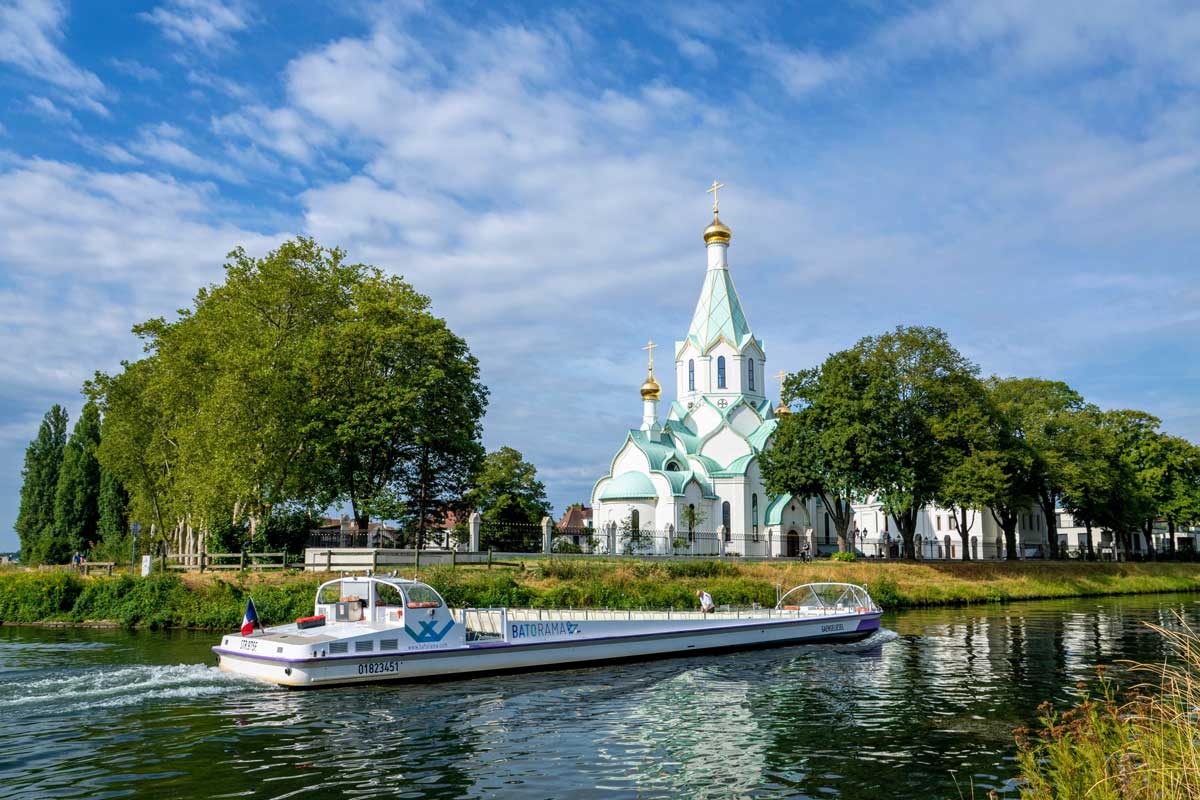
River Rhine Tortu: A Smaller Watercourse with a Unique History
A lesser-known but equally fascinating river in Strasbourg is the small Rhine Tortu. Also called "Rhin Tordu" (Twisted Rhine or krummer Rhein in German), this curvy little stream meanders through downtown before merging with larger canals.
Despite its modest size, the Rhine Tortu offers a unique setting for water-based activities. Its calm waters and scenic surroundings make it an ideal spot for paddleboarding and canoeing. It's a tranquil escape right in the heart of the city, perfect if you are looking to connect with nature without venturing too far from urban comforts.
